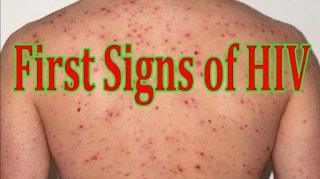HIV Signs and Symptoms
Many people do not have any symptoms when they are first infected with HIV. Some have a flu-like illness, called HIV seroconversion syndrome, a month or two after exposure to the virus. This disease can cause a variety of symptoms, including:
- Diarrhea
- Enlarged liver or spleen
- Fever
- Enlarged or swollen lymph nodes
- Headache
- Muscle pain
- Nausea and vomiting
- Neurological symptoms
- Rash on the abdomen, arms and legs, and face
- Sore throat
Canker sores, a common fungal infection of the mouth caused by Candida, a yeast-like fungus
These symptoms usually disappear within a week to a month and can be mistaken for other viral infections. During this period, people are highly infectious and HIV is present in large amounts in genital fluids.
An infected person may not experience severe symptoms for eight to 10 years or more. This period, called the asymptomatic period, varies in length for each person. Some people may have symptoms in a few months and others may be symptom-free for years.
Children born with HIV usually have symptoms within two years of birth. Children can grow slowly or get sick often.
As the immune system weakens, other complications can occur. For many people, the first signs of infection are large lymph nodes or swollen glands that can enlarge for more than three months. Other symptoms before the onset of AIDS include:
- Fever and sweats
- Herpes infections that cause severe sores in the mouth, genitals, or anal
- Lack of energy
- Pelvic inflammatory disease in women that does not respond to treatment
- Persistent skin rashes or flaky skin
- Shingles, a painful nerve disease that is often accompanied by a rash or blisters
- Short-term memory loss
- Weightloss












Comments